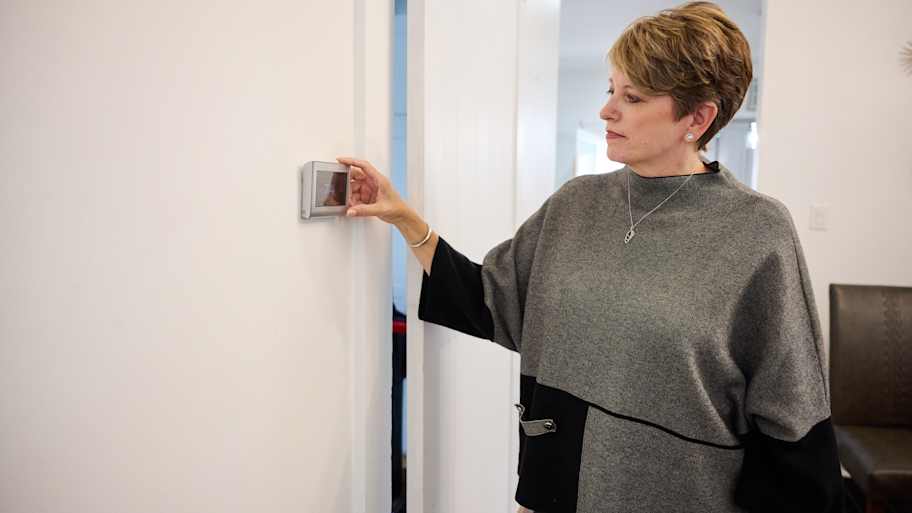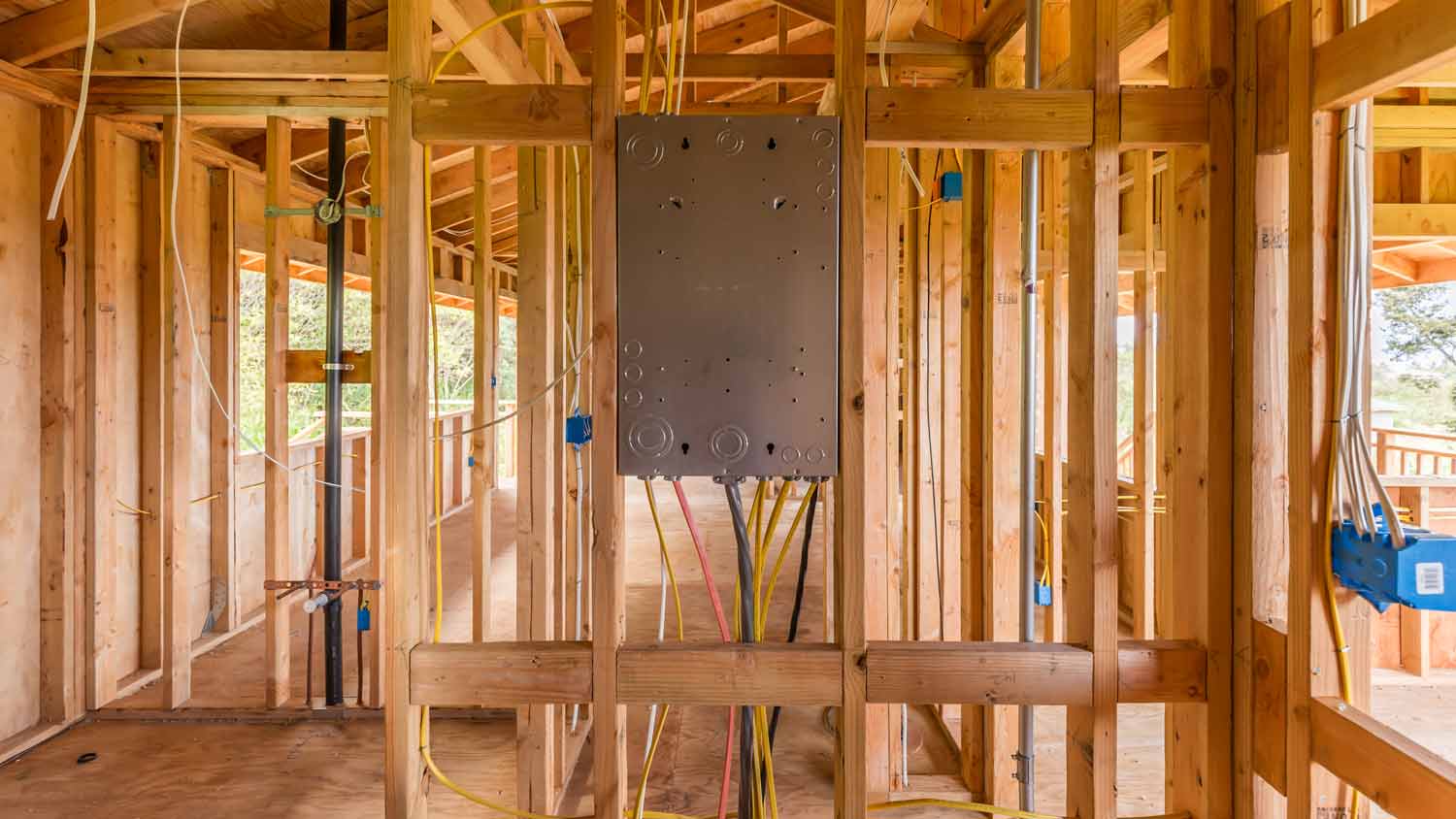How to Choose Between Halogen vs. Xenon Kitchen Lighting
Choosing the right lighting for your kitchen can make meal prep even easier


The lighting in your kitchen affects your mood, productivity, and even safety. There’s plenty to consider, including how many light fixtures are necessary, where to place them, and what type of bulbs are best. If you’re debating between xenon versus halogen light bulbs for your kitchen, you’ll need to understand the benefits and setbacks of each.
What Are Xenon Bulbs?
Xenon bulbs are a type of gas discharge lamp. Electricity passing through ionized xenon gas produces light that’s bright and crisp. Xenon bulbs are commonly used in vehicle headlights, but they’re also great for the kitchen, especially inside or beneath cabinets.
Advantages of Xenon Bulbs
Xenon bulbs are a popular kitchen lighting choice. Consider some of the following advantages they offer if you’re exploring different lighting options.
They’re Good for Bright Lighting
One of the best advantages of a xenon bulb is how bright of a light it produces. In fact, xenon bulbs are often used in dental offices because of how well they perform.
You may not be searching for cavities in your kitchen, but it’s still a space that requires effective lighting, especially when chopping veggies or frosting a birthday cake.
They’re Long Lasting
Using xenon bulbs can mean more time between replacements. A xenon bulb lasts for approximately 10,000 hours (20,000 in some cases), making it an efficient choice for a kitchen bulb.
They Have a Safer Performance
Xenon bulbs give off less heat when compared to other types of home-use bulbs, which can be safer. If you accidentally brush up against or touch a lighting fixture, you’re less likely to be burned with a cooler bulb. While you should never touch a lit light bulb, one that emits less heat and fewer UVs is a positive feature.
Disadvantages of Xenon Bulbs
While xenon bulbs offer plenty of advantages, there are also a few potential setbacks you should know.
They’re Expensive
Xenon bulbs tend to be an expensive lighting choice, at least when considering their initial cost. An under-cabinet xenon bulb can be almost twice the cost of a halogen. This can quickly add up if you have lighting beneath all or more of your cabinets. But because they have a longer lifespan than other types of bulbs, they could end up being more cost-efficient in the long run.
They Have High Energy Consumption
Xenon bulbs also tend to consume more energy compared to incandescent bulbs. But because they run cooler than most other types of bulbs, they can help save energy in some respects (e.g., less likely to heat up a room on a hot summer day).
What Are Halogen Bulbs?

Halogen bulbs are like incandescent bulbs, except they utilize halogen instead of argon gas. They offer the traditional look of a household light bulb along with several other benefits.
Advantages of Halogen Bulbs
Halogen bulbs are a classic lighting choice. They offer both cosmetic and functional benefits.
They Have a Traditional Appearance
Halogen bulbs look like traditional light bulbs. This aspect can be important in a kitchen design, where uniquely shaped light bulbs may look awkward in certain lighting fixtures. Halogen bulbs can visually fit into just about any space.
They Have a Warm Glow
Some find bright kitchen lighting to feel cold or sterile, which gives halogen bulbs an edge. They offer a warm glow that’s calming and inviting.
They’re Greener
Halogen bulbs use about 25% less energy than standard bulbs. They also meet federal energy-efficiency standards and are recyclable in some areas.
Disadvantages of Halogen Bulbs
They Have a Shorter Lifespan
Halogen bulbs last up to 4,000 hours. While this is longer than a standard incandescent bulb, it’s far from being the longest-lasting bulb on the market.
They’re Untouchable
Halogen bulbs can reach extreme temperatures and should avoid contact with flammable items. You should even avoid touching a cool bulb. Oils from your hands can cause hot spots on a bulb and shorten its lifespan. When changing a halogen bulb, wait for the original bulb to cool, wear gloves, and be as quick as safely possible.
Xenon vs. Halogen: Which Is Best?
When it comes to choosing the best kitchen lighting, you should take several factors into consideration. See who comes across as on top in the following comparisons of xenon vs. halogen.
Brightness
Xenon bulbs provide a crisp, white light, while halogen bulbs are known for their cool, warm appearance. Both have their place in the home, but a kitchen requires adequate lighting for meal preparation and entertaining.
Brighter appearance: xenon
Longevity
All light bulbs burn out over time. However, xenon bulbs can last up to 10 times longer than halogen. Let’s say your kitchen lights are on for about five hours every night. With halogen bulbs, you’ll be replacing them in less than two years. Xenon bulbs could last just over 10 years.
Longer lifespan: xenon
Cost
There are several variables to consider when determining the cost of xenon vs. halogen bulbs. Xenon bulbs are more expensive than halogen initially and use more energy. But they have a longer lifespan and don’t heat up a room when in use. With this taken into consideration, xenon bulbs tend to cost less over time.
Less costly: xenon
Placement
It’s not likely that you’ll be able to use only xenon or only halogen light bulbs in your kitchen. For example, halogen bulbs are great for recessed lighting because of their gentle glow. But xenon bulbs are better for accent lighting beneath cabinets since they don’t get very hot. While xenon offers advantages as a kitchen light bulb, halogen tends to be placed more consistently throughout the same space.
More uses: halogen
Choosing Your Kitchen Lighting
Every design element of your kitchen deserves attention, including its lighting. When it comes to deciding between xenon versus halogen bulbs, understanding the difference between the two can help you make the right choice.
If you need to hire a lighting specialist to help you get the most out of your kitchen lighting, get in contact with a local lighting fixture installation pro.



.jpg?impolicy=leadImage)

- Home Generator Repair
- Lamp Repair
- Electric Repair
- Generator Installation
- TV Antenna Services
- Emergency Electricians
- Commercial Electricians
- Attic Fan Installation
- Attic Fan Repair
- Exhaust Fan Installation
- Electric Inspectors
- Subcontractors
- Electrical Construction
- EV Charger Installer
- Chandelier Installation
- Doorbell Installation
- Bathroom Fan Installation
- Ring Installers
- Electrical Panel Upgrade
- Choosing Between Halogen Light Bulb Types: An Illuminating Guide
- Shedding Light on the Best Types of Light Bulbs for Your Space
- 4 Common Types of Light Bulbs: A Complete Guide
- How to Dispose of Light Bulbs and What to Do With Each Type
- 9 Best In-Cabinet Lighting Options and Ideas
- How Many Watts Does a Light Bulb Use, and Why Does It Matter?
- 7 Vanity Lighting Ideas to Brighten Your Bathroom
- Incandescent vs. Fluorescent Light Bulbs: What’s Right for Your Home?
- What Is an Incandescent Light Bulb? Choose the Right Light for Your Space
- 10 Tips to Make Changing Light Bulbs Easier















